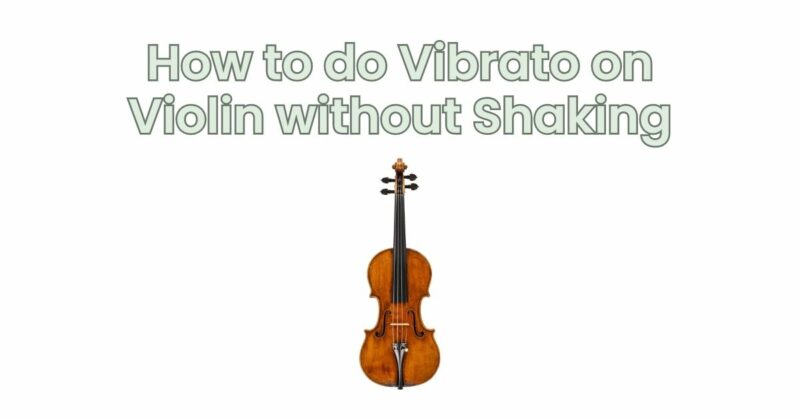Vibrato is a technique that adds expressiveness and depth to violin playing. While vibrato involves a controlled oscillation of pitch, it’s common for beginners to experience shaking or unwanted tension during the initial stages of learning. Developing a smooth vibrato technique requires focus, practice, and attention to proper hand and arm positions. In this article, we will explore techniques and exercises to help you achieve a smooth vibrato on the violin while minimizing shaking or unwanted tension.
- Establish Proper Hand and Arm Positions:
- Begin by ensuring that your hand and arm are in a relaxed and balanced position. The hand should be curved and rounded, with the fingers hovering above the fingerboard. Avoid excessive tension or gripping.
- Maintain a relaxed and flexible wrist. Avoid excessive bending or collapsing of the wrist, as it can contribute to tension and shaking.
- Focus on Finger Flexibility:
- Develop finger flexibility by practicing finger stretches and exercises away from the violin. Gently stretch and flex each finger independently, focusing on maintaining relaxation and flexibility.
- Incorporate finger flexibility exercises into your daily warm-up routine to promote greater dexterity and control.
- Start with Slow and Controlled Movements:
- Begin practicing vibrato with slow and controlled movements. Focus on maintaining a relaxed hand and finger throughout the motion.
- Start by placing your first finger on a note of your choice and practice rocking the finger back and forth in a slow and controlled manner. Pay attention to the evenness and smoothness of the oscillation.
- Gradually increase the speed and intensity of your vibrato over time as you gain more control and confidence.
- Practice on Different Strings:
- Experiment with practicing vibrato on different strings. Each string may require slight adjustments in finger placement and pressure. Explore the variations in finger motion and find what works best for each string.
- Start with simple exercises and scales, gradually incorporating vibrato into your repertoire pieces on different strings. This will help you develop a consistent and controlled vibrato technique across the instrument.
- Relaxation and Release of Tension:
- Focus on releasing tension in your hand, arm, and shoulder while practicing vibrato. Tension can contribute to shaking or unwanted muscle contractions.
- Incorporate relaxation exercises into your practice routine. Take breaks between practicing vibrato to release any accumulated tension and relax your muscles.
- Seek Feedback and Guidance:
- Work with a knowledgeable violin teacher or mentor who can provide guidance, feedback, and corrections as you practice vibrato. They can offer specific exercises and techniques to address shaking or tension issues.
- Utilize video recordings of your practice sessions to visually analyze and assess your vibrato technique. Compare your technique with professional violinists and seek inspiration from their performances.
Conclusion:
Developing a smooth vibrato technique on the violin requires patience, practice, and attention to detail. Focus on establishing proper hand and arm positions, developing finger flexibility, and practicing controlled and relaxed movements. Experiment with different strings and seek guidance from a qualified instructor to address shaking or tension issues. With consistent practice and a mindful approach, you can achieve a smooth vibrato that enhances your violin playing and adds depth and expressiveness to your musical performances. Embrace the journey of learning vibrato, and remember that progress comes with time and dedicated effort.


